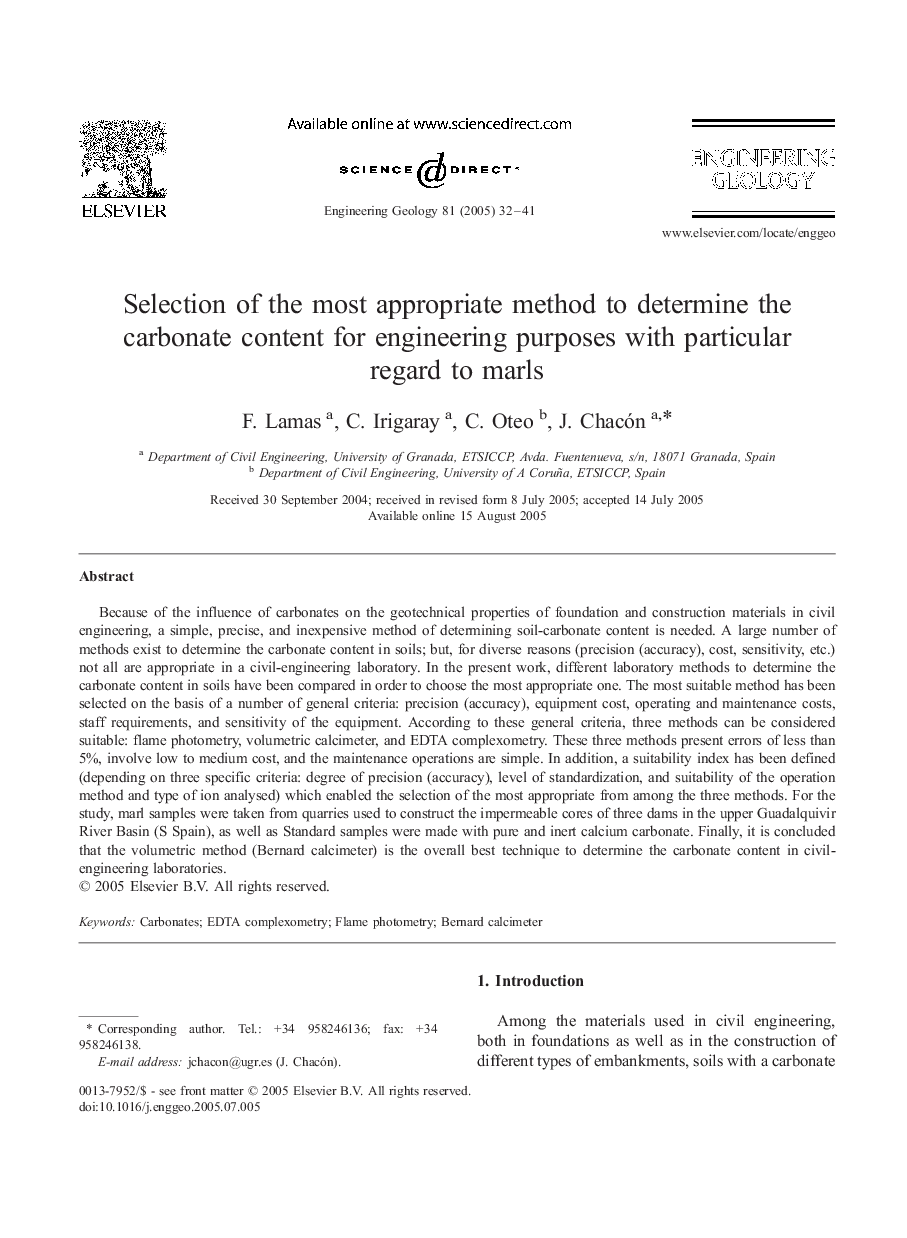| Article ID | Journal | Published Year | Pages | File Type |
|---|---|---|---|---|
| 9537765 | Engineering Geology | 2005 | 10 Pages |
Abstract
Because of the influence of carbonates on the geotechnical properties of foundation and construction materials in civil engineering, a simple, precise, and inexpensive method of determining soil-carbonate content is needed. A large number of methods exist to determine the carbonate content in soils; but, for diverse reasons (precision (accuracy), cost, sensitivity, etc.) not all are appropriate in a civil-engineering laboratory. In the present work, different laboratory methods to determine the carbonate content in soils have been compared in order to choose the most appropriate one. The most suitable method has been selected on the basis of a number of general criteria: precision (accuracy), equipment cost, operating and maintenance costs, staff requirements, and sensitivity of the equipment. According to these general criteria, three methods can be considered suitable: flame photometry, volumetric calcimeter, and EDTA complexometry. These three methods present errors of less than 5%, involve low to medium cost, and the maintenance operations are simple. In addition, a suitability index has been defined (depending on three specific criteria: degree of precision (accuracy), level of standardization, and suitability of the operation method and type of ion analysed) which enabled the selection of the most appropriate from among the three methods. For the study, marl samples were taken from quarries used to construct the impermeable cores of three dams in the upper Guadalquivir River Basin (S Spain), as well as Standard samples were made with pure and inert calcium carbonate. Finally, it is concluded that the volumetric method (Bernard calcimeter) is the overall best technique to determine the carbonate content in civil-engineering laboratories.
Keywords
Related Topics
Physical Sciences and Engineering
Earth and Planetary Sciences
Geotechnical Engineering and Engineering Geology
Authors
F. Lamas, C. Irigaray, C. Oteo, J. Chacón,
